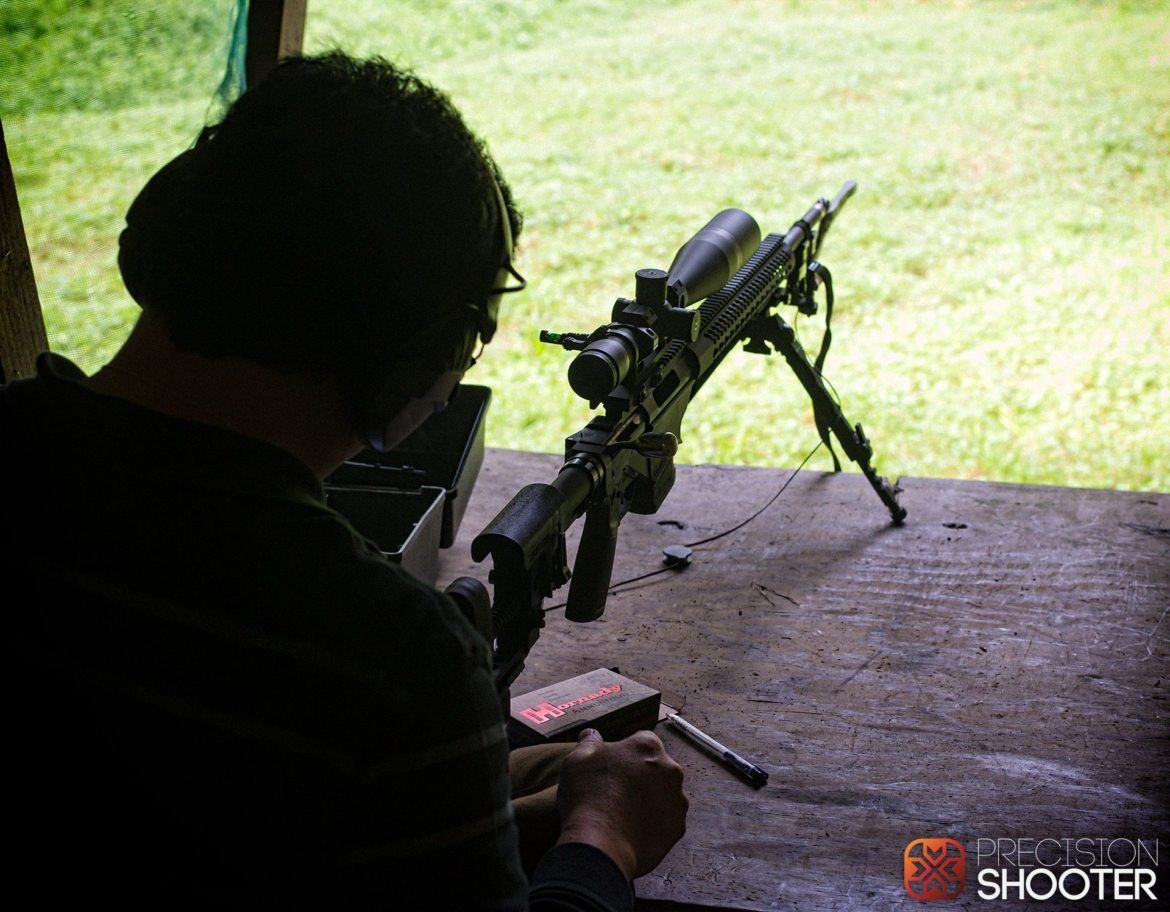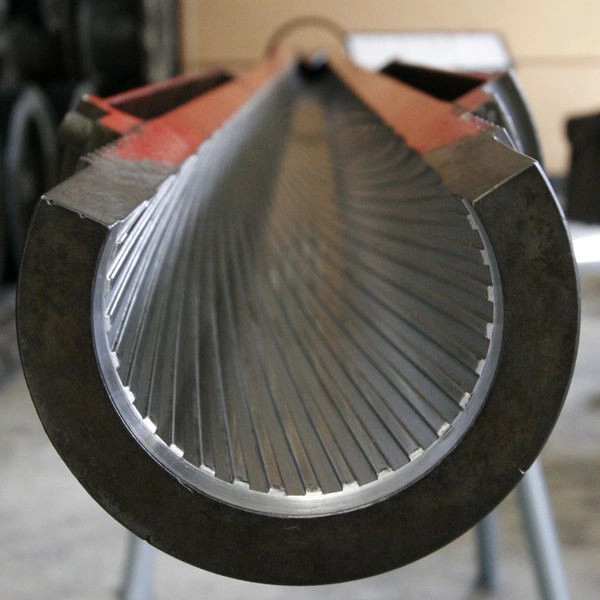A cannonball pendulum – the first gun chronograph?
Things have certainly changed a lot since Benjamin Robins invented the ballistic pendulum around 1742. Essentially, think of a cannon ball hanging down, then shoot it. Through some maths, the swing of the pendulum could return the momentum of the projectile, divide that by the mass of the projectile, and you get the velocity.
This basic, but functional system was replaced first in 1808 by a rotating shaft with paper discs on it. The bullet would pass through the first discs while the shaft spun and the angular difference between the holes could be then used to calculate the velocity. This was then replaced by an electromagnetic clockwork mechanism that was stopped and started as the bullet passed through two screens with fine wires suspended from them.
But why do we even need a chronograph?
Well, for many shooters, they may never actually need one. If you shoot only factory ammo, primarily hunt and tend to stick under 400 meters, then you may not need a chronograph.
In a nutshell, a chronograph lets you measure the speed that the bullet leaves the barrel. This information, in conjunction with data about the bullet you are firing and the environment you are shooting in, lets you start mapping out the expected flight path of the projectile. Where it’s going to hit, and when. This information then lets us adjust our aim point (through the turrents or holding over) to get that bullet to land where we want it to.
The speed the bullet leaves the barrel, often expressed in FPS (feet per second) or MPS (meters per second) is known as it’s velocity. This is often given to you on the outside of factory bought ammunition. However, it’s not always accurate – and the further you shoot out, the more accurate you want your calculations to be.
If you are reloading, then you may or may not have an indication of the expected velocity. A chronograph is the best method of determining accurate information to use in your calculations.
Types of Chronographs
Optical
Things have moved on a bit since the first electromagnetic mechanisms.
For many years, the common Chronograph was optical – the bullets would pass over two (sometimes three) optical sensors – one after the other, and the time between the two could then be transferred into a measure of speed – Speed = Distance/Time.
And you thought you would never use math’s outside of school!
So, say the two sensors on a chronograph were .3m apart (300mm), and it took .0003 seconds for that bullet to pass over them. .3/.0003=1000 so that projectile is moving at 1000m/s or 3280 fps.
The optical chronograph has long been the standard. However, it had/has its issues. Because it primarily relies on the projectile breaking a beam of light to trigger, it is highly susceptible to environmental factors – namely, shade, sun, temperature, how you hold your tongue in your mouth. In fact, in some cases, it simple isn’t an option.
Also, the setup needs to be in front of the shooter – often a couple of meters. This means two things. You can’t simple setup an optical chronograph on a shared range – as you will be in front of the firing line to do so. Some units, you also need to go forward to read the results – so feedback is delayed. Secondly, you can shoot them. It happens, somewhat regularly.
Magnetic
A couple of years ago, Magnetospeed brought out a new type of Chronograph. Instead of the traditional optical configuration, the magnetospeed uses a magnetic field to track and calculate the speed of the bullet. The maths is the same, but the mechanism of recording the timing is different.

Instead of having the chronograph out in front of you, the Magnetospeed straps directly to the barrel (or rail) of your firearm. This means a couple of things. Firstly, you can put it on, or take it off without having to go forward of the firing line. The advantage of this is that you can arrive somewhere with other people shooting, put on the unit, Chrono your load, take it back off and be done without having to wait for the range to close, be allowed forward and so on. This can make for a much more efficient use of your time.
Some will say it also makes for a more accurate reading. Brian Litz for one. The man behind Applied Ballistics (and the man who literally wrote the book on long range shooting) recommends and uses the Magnetospeed.
You can still shoot them off the end of your rifle. But a little time to understand setup avoids this.
Additionally, it is a known fact that a Magnetospeed will change your POI. So don’t zero with it on!
Dopler Radar
The new kid on the block, at least, in a commercially viable, individual user format.
Dopler Radar has traditionally been used to track accurately and log the ballistics of bullets (and any moving object). However, the cost has limited it’s use to manufacturers and military. Like, hundreds of thousands of dollars an hour limiting.
However, recently, a personal radar system has come onto the market- the LabRadar.
Technically, it’s not a chronograph – the manufacturer prefers to call it a personal ballistic velocity radar.
Instead, the unit is using sound – and the principle of the dopler effect – the change in frequency of a wave (or another periodic event) for an observer moving about its source. You know the change in the ‘pitch’ of a car as it heads towards you, passes you, then heads away? That’s the dopler effect.
Buy tracking this change in pitch; the unit can determine the speed of your bullet, and not at just one point – as a continuous stream of data out to around 100 yards.
Much like the Magnetospeed – you don’t have to go forward of the unit, but unlike the others, you can’t shoot this one – as it sits next to you. Also, because it isn’t fixed to the firearm, you can easily switch guns – making the speed efficiencies even better!
This new unit seems set to revolutionise the person chronograph yet again, and while I haven’t personally been able to check out one yet – it is certainly on the list to do so soon!
Which one is for me?
Well, for me anyhow, the time of the optical chronograph has gone. I currently use a Magnetospeed and like the fact it is small, quick and accurate – for field shooting, where you don’t have much time to zero and chrono your rifle at the shoot – the Magnetospeed has meant that I can quickly confirm my rifles velocity, then pack the unit back up into the backpack.
For range use – the LabRadar looks like the best there is to be had. Quick setup, no swap over and extreme accuracy. I might just have to end up with both!


